The Battle of Agincourt, October 25th 1415
You can let this animation run at it’s own speed, or click pause and then move the show on as you wish with the ‘next’ and ‘prev’ buttons. Grateful thanks to Andy Flaster and Jonathan Crowther for all the technology stuff. AND find our more, much more, at the podcast episode 146.

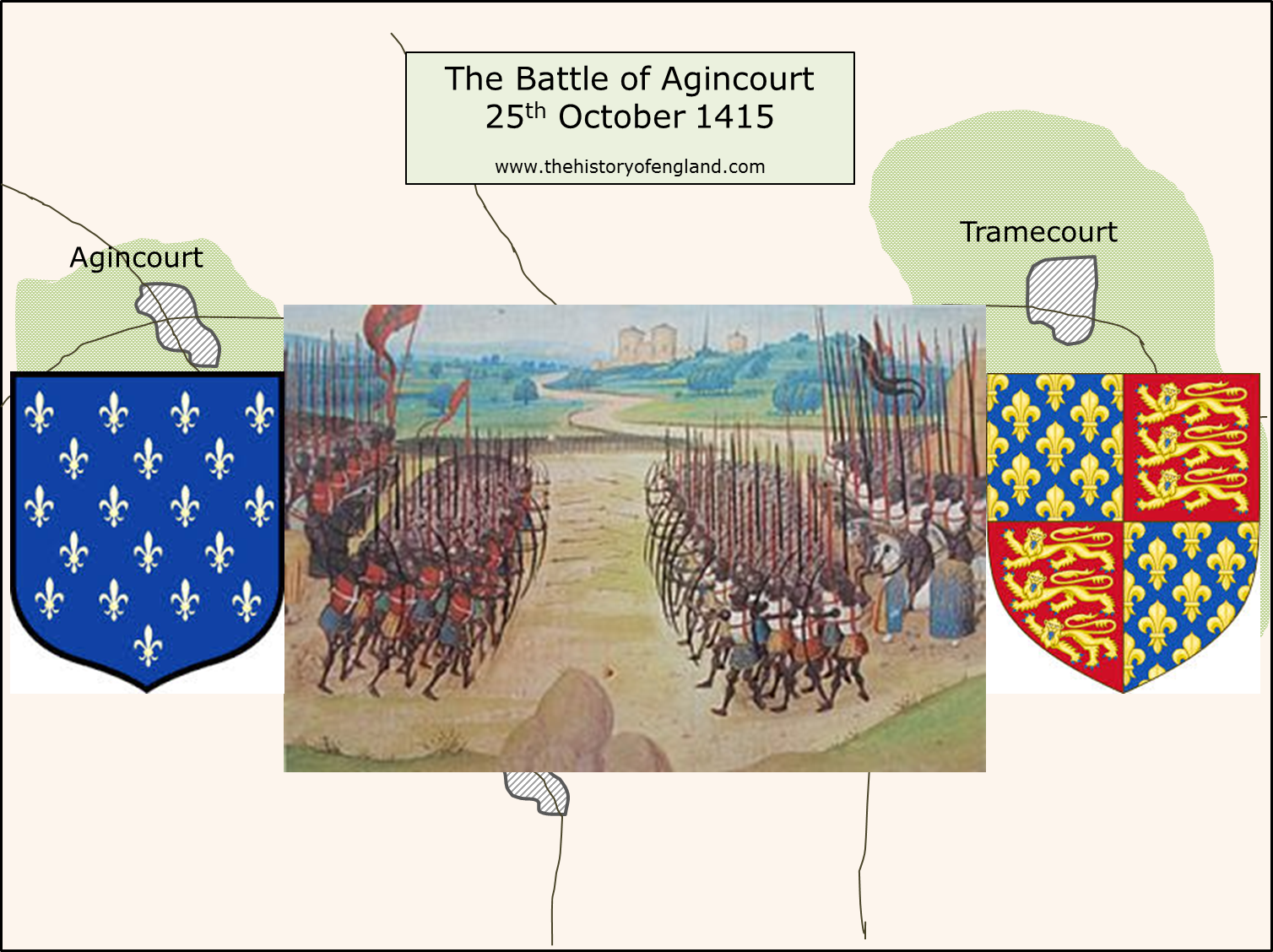
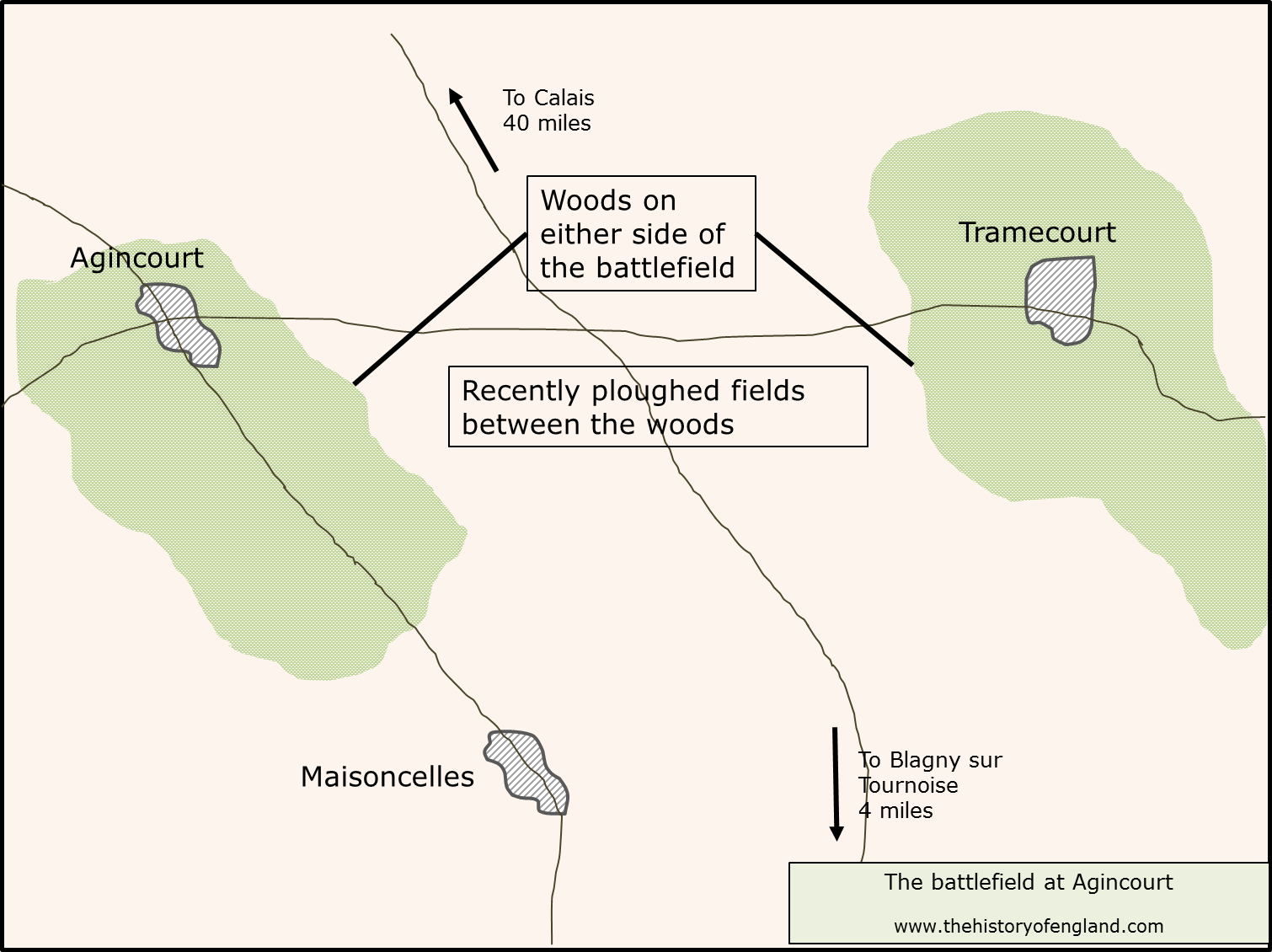
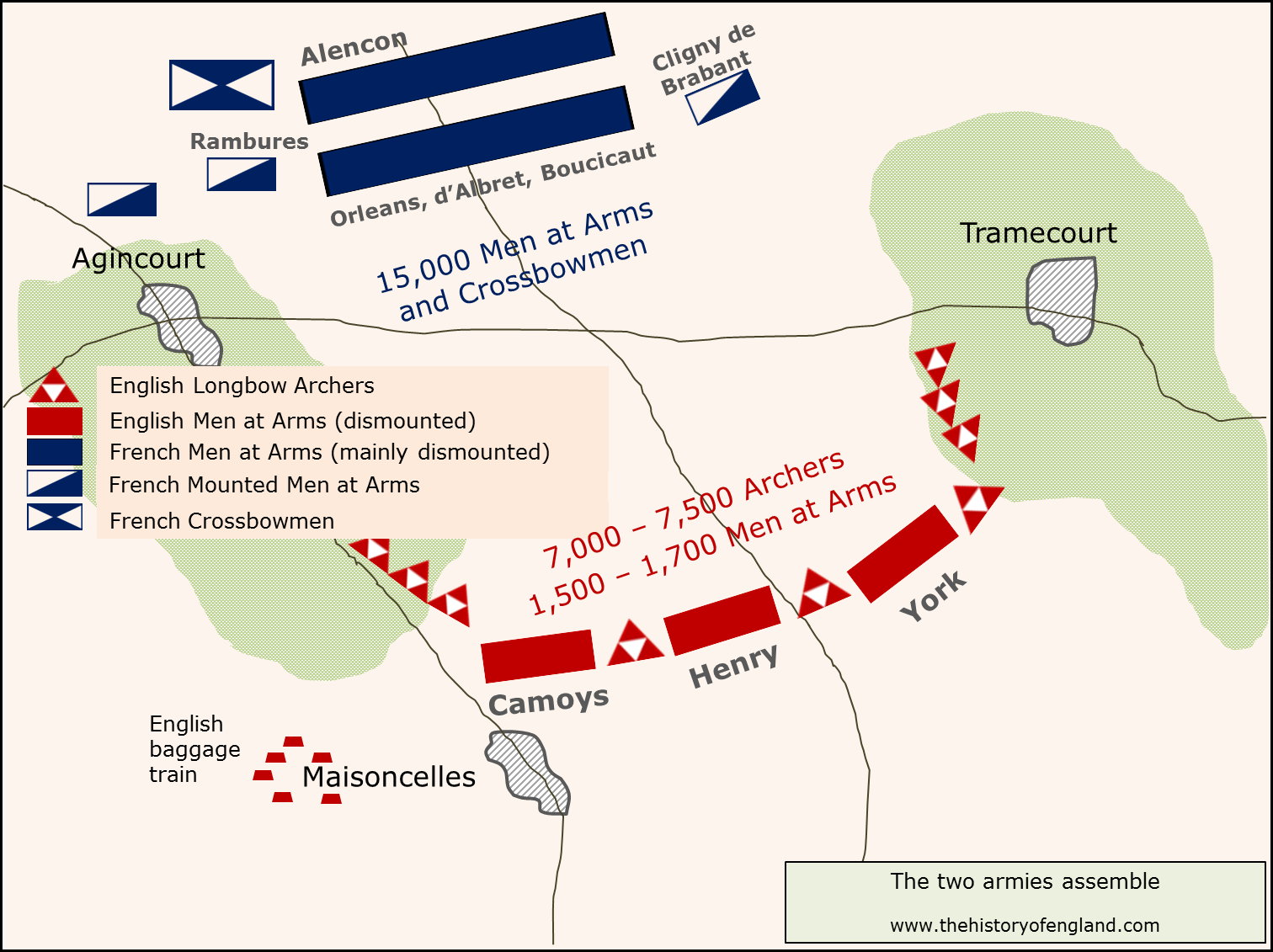
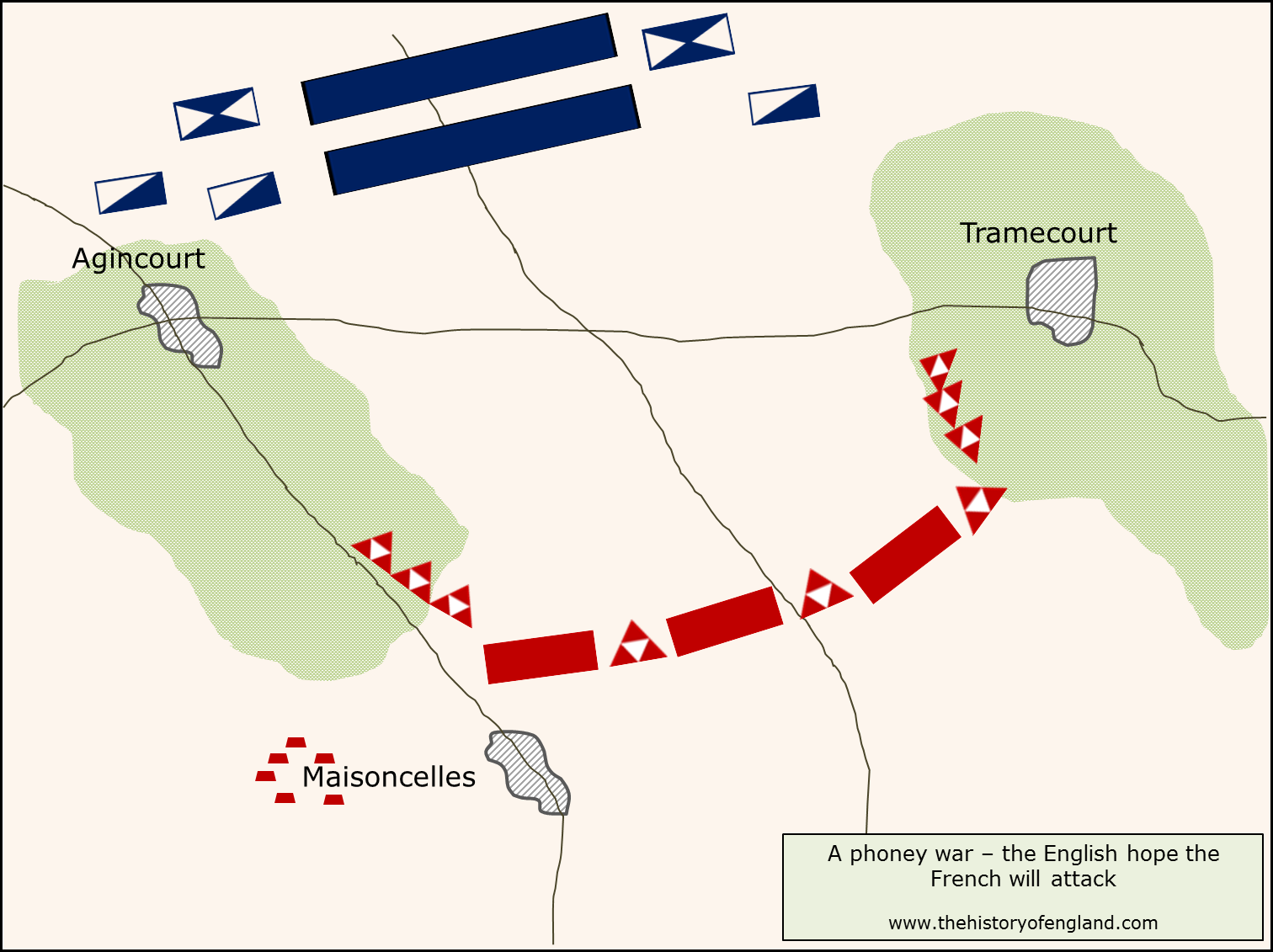
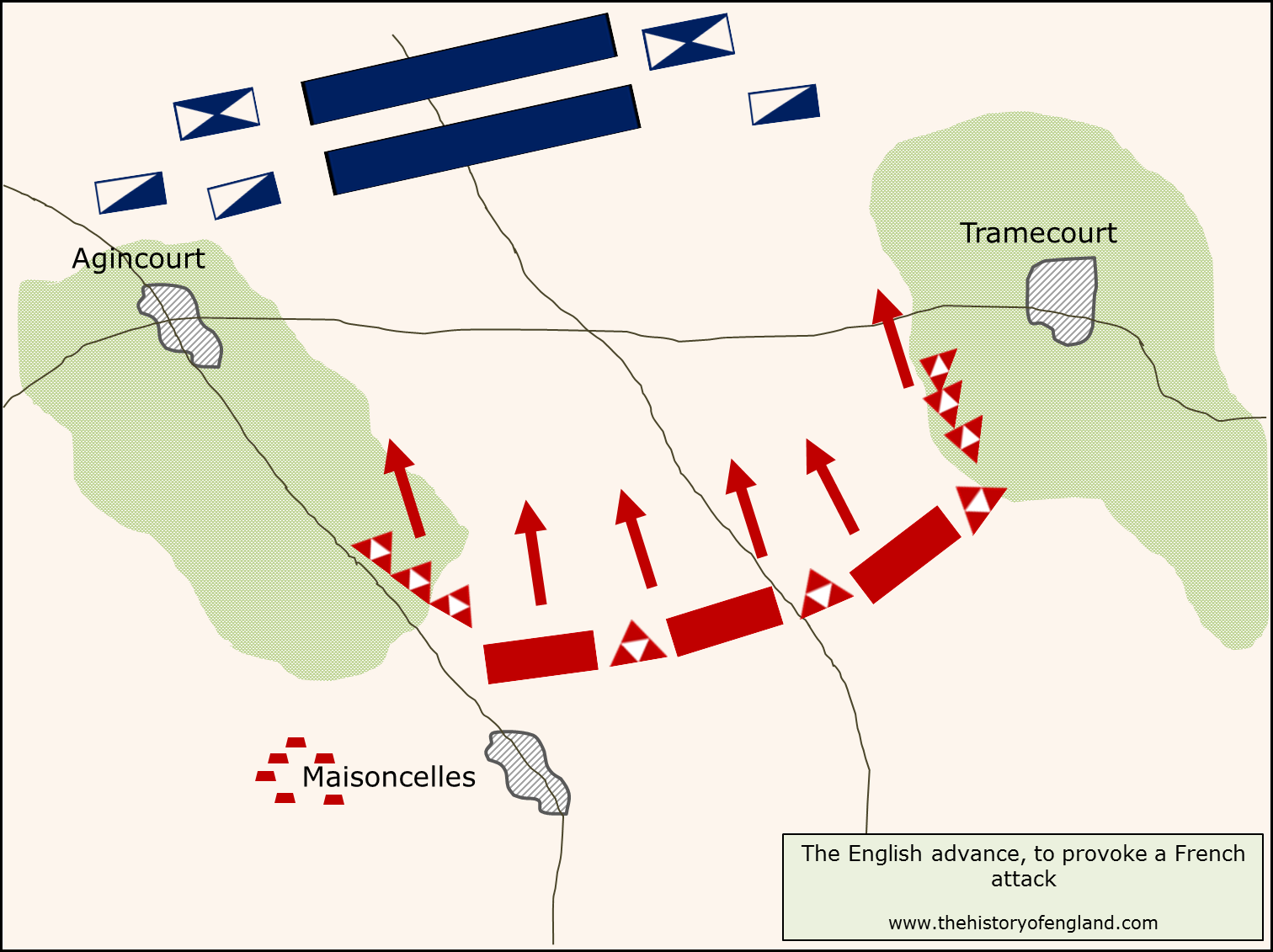
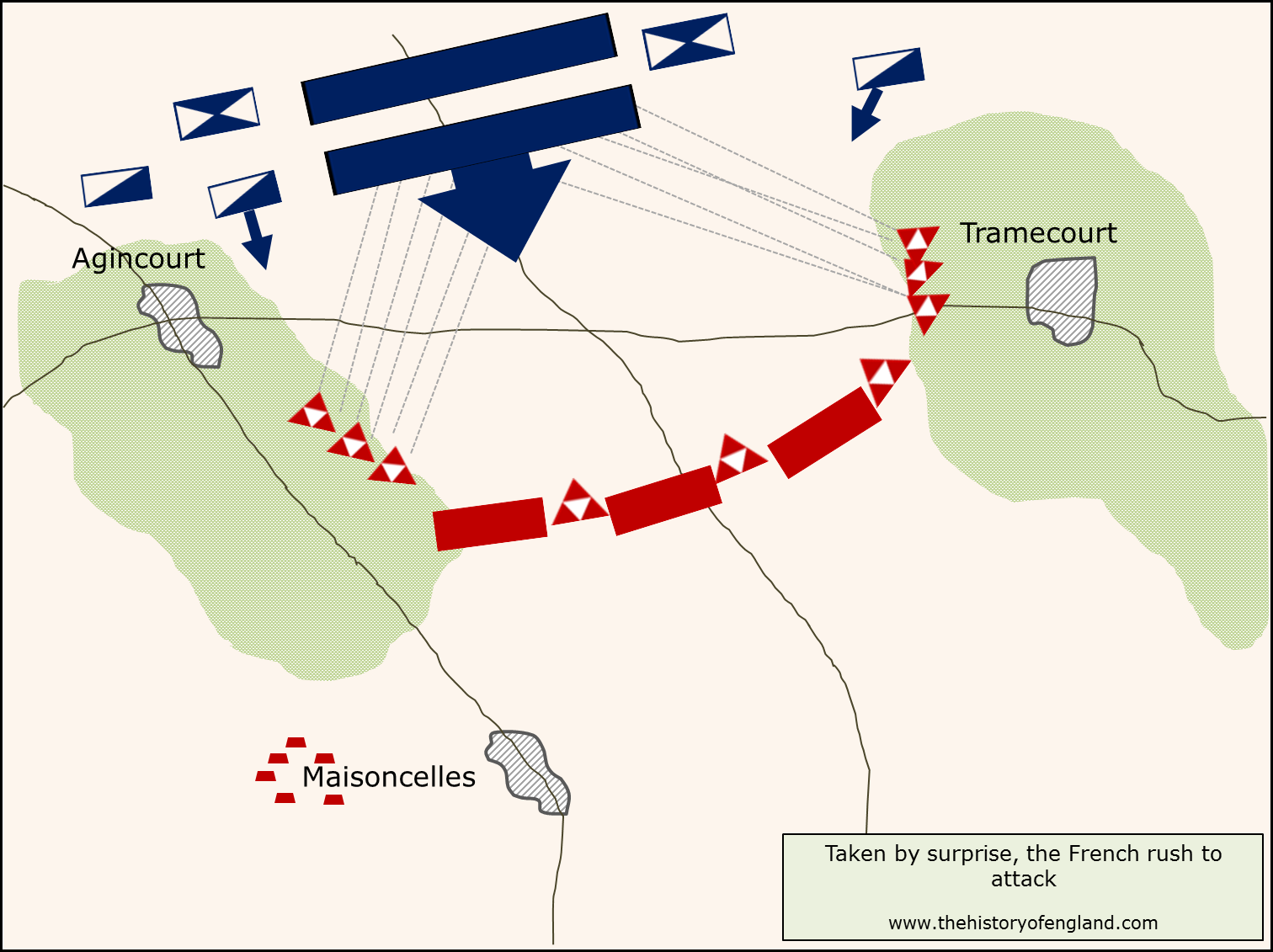
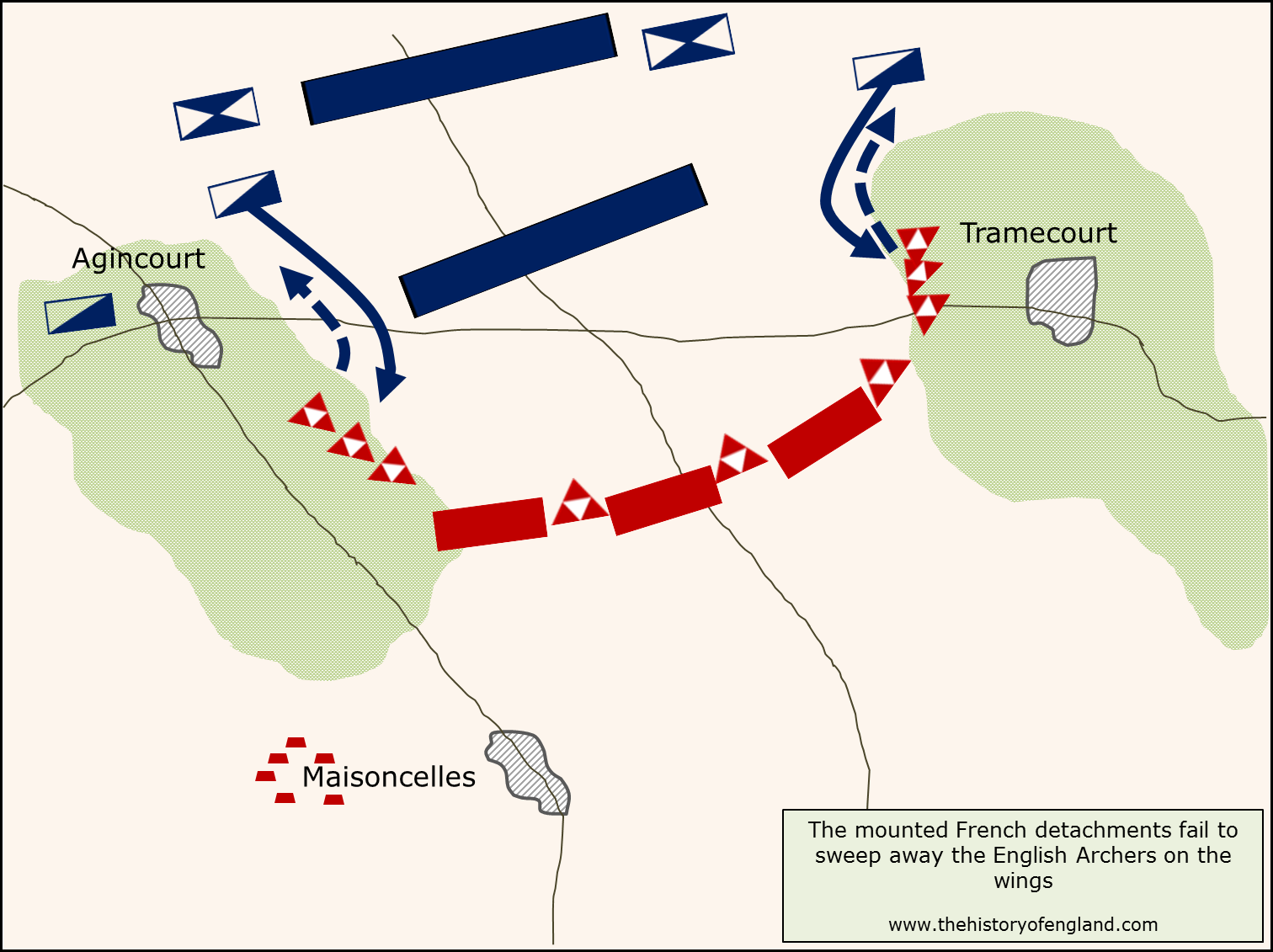
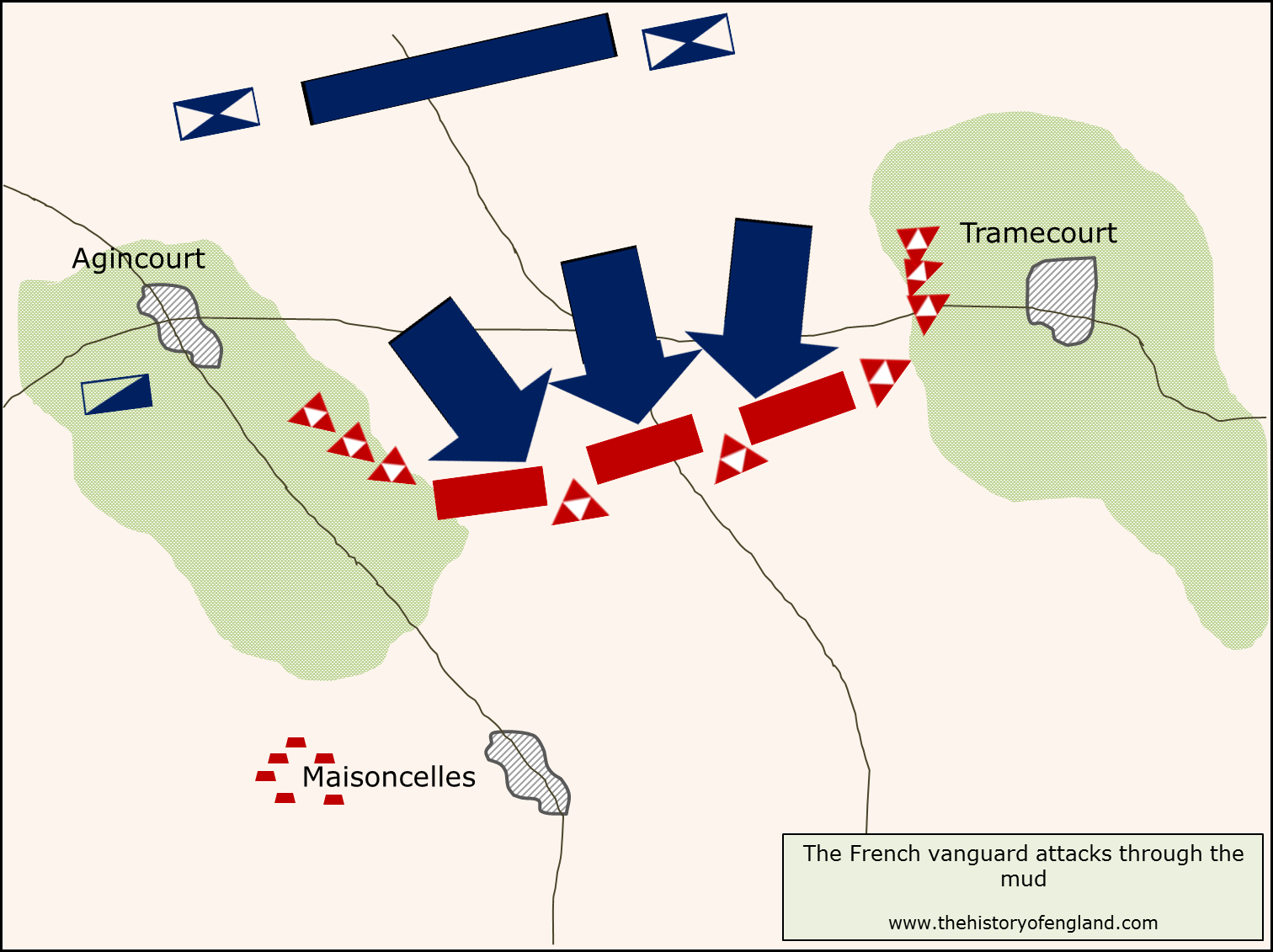
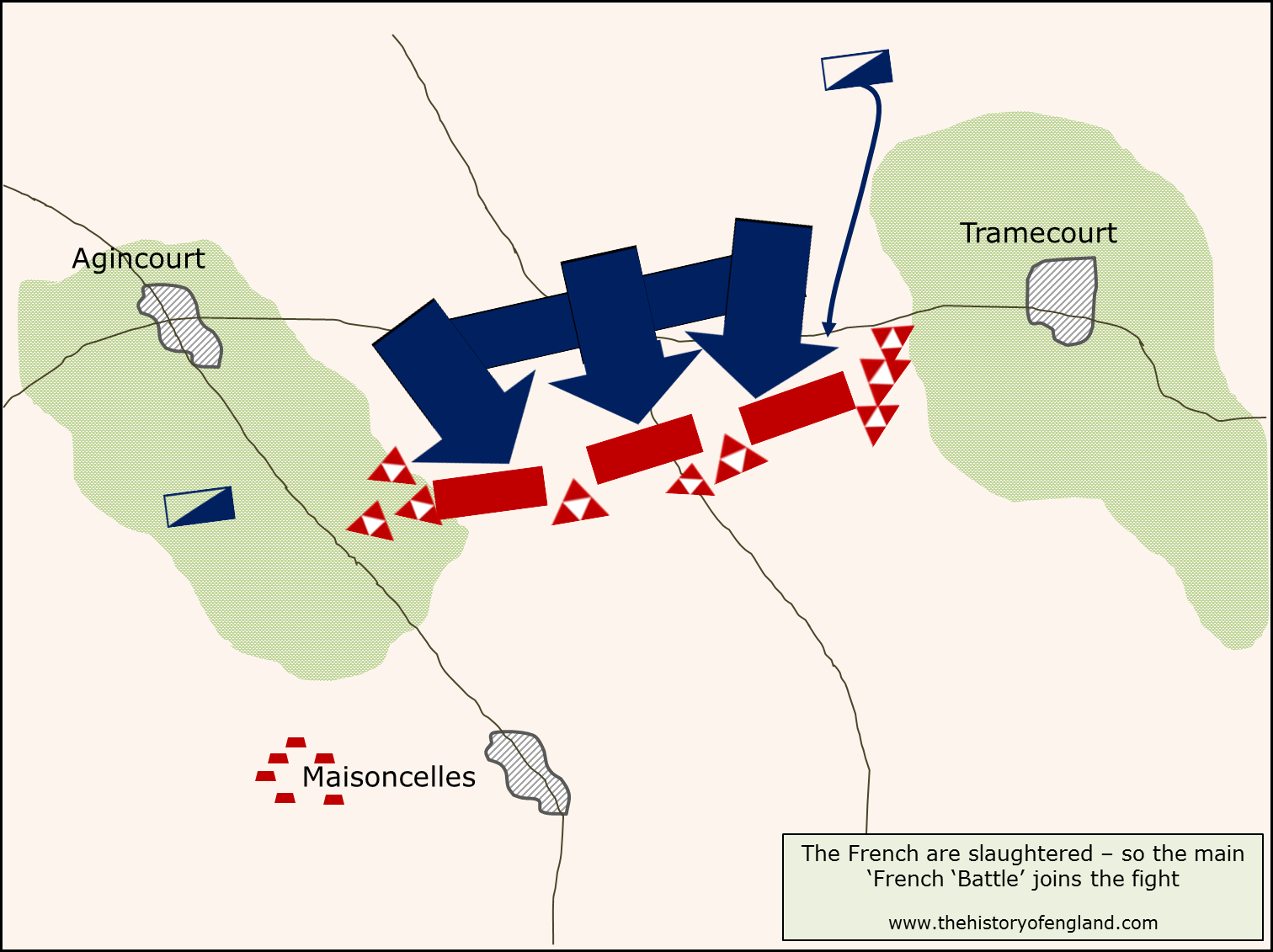
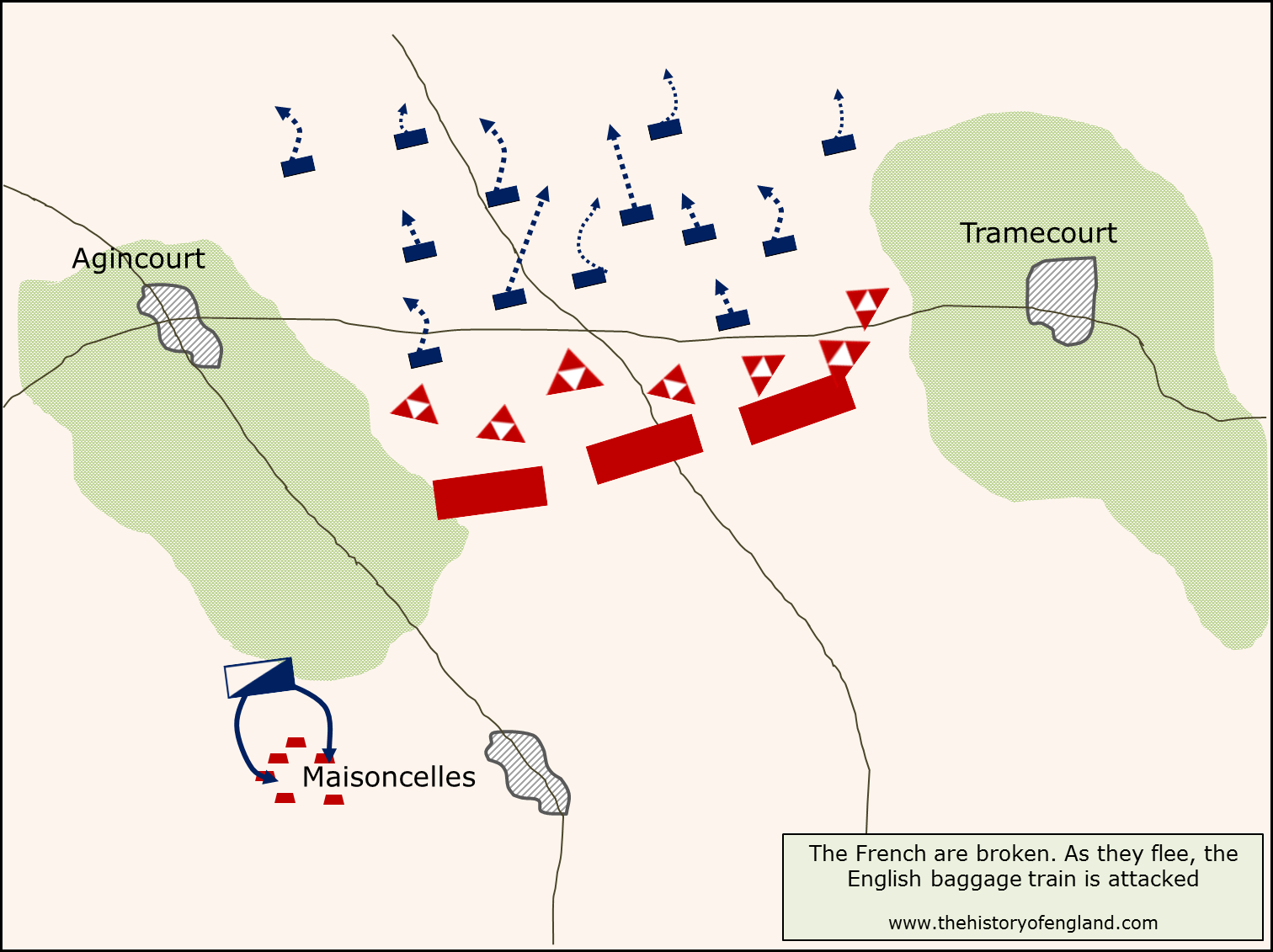
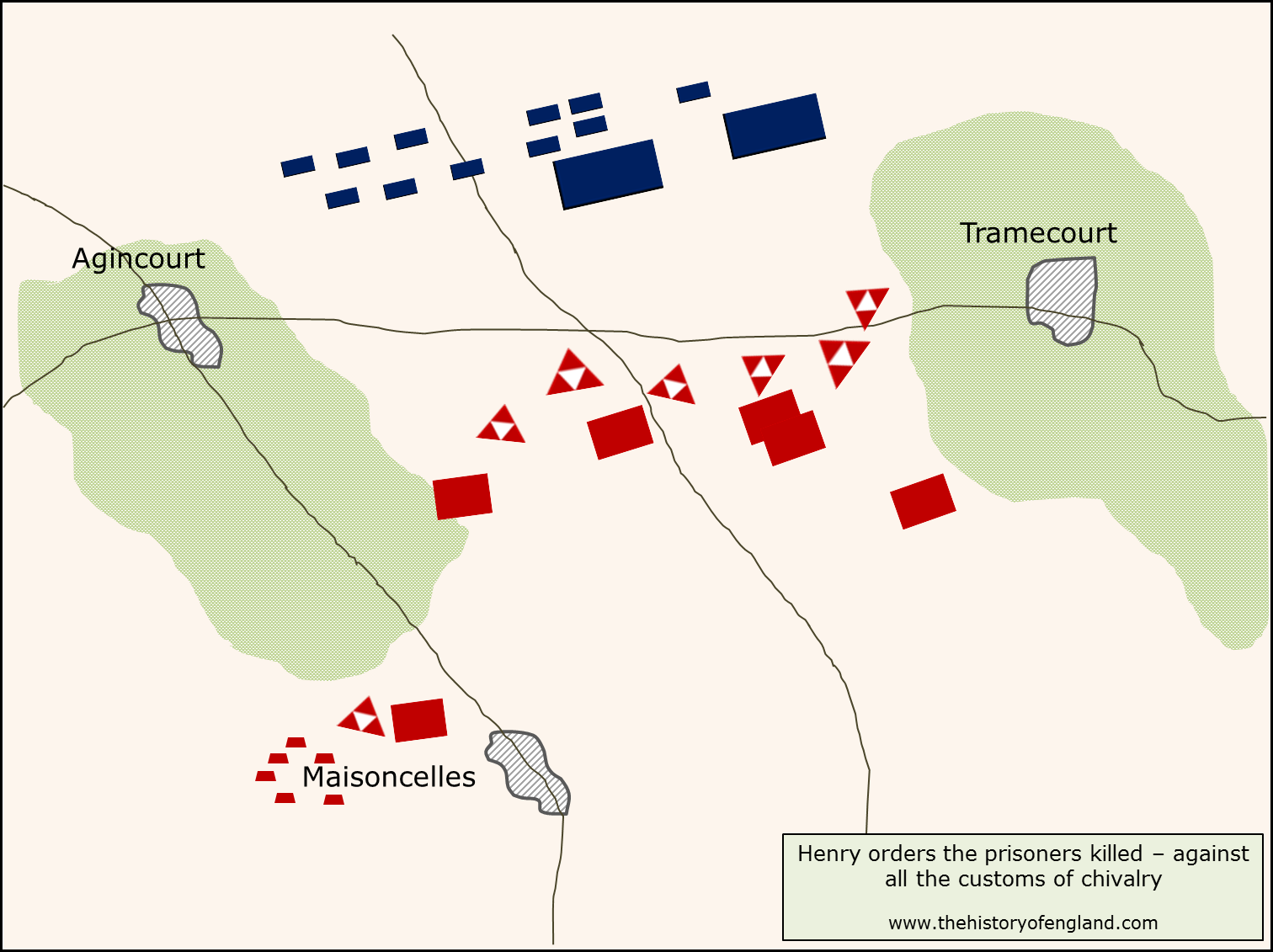
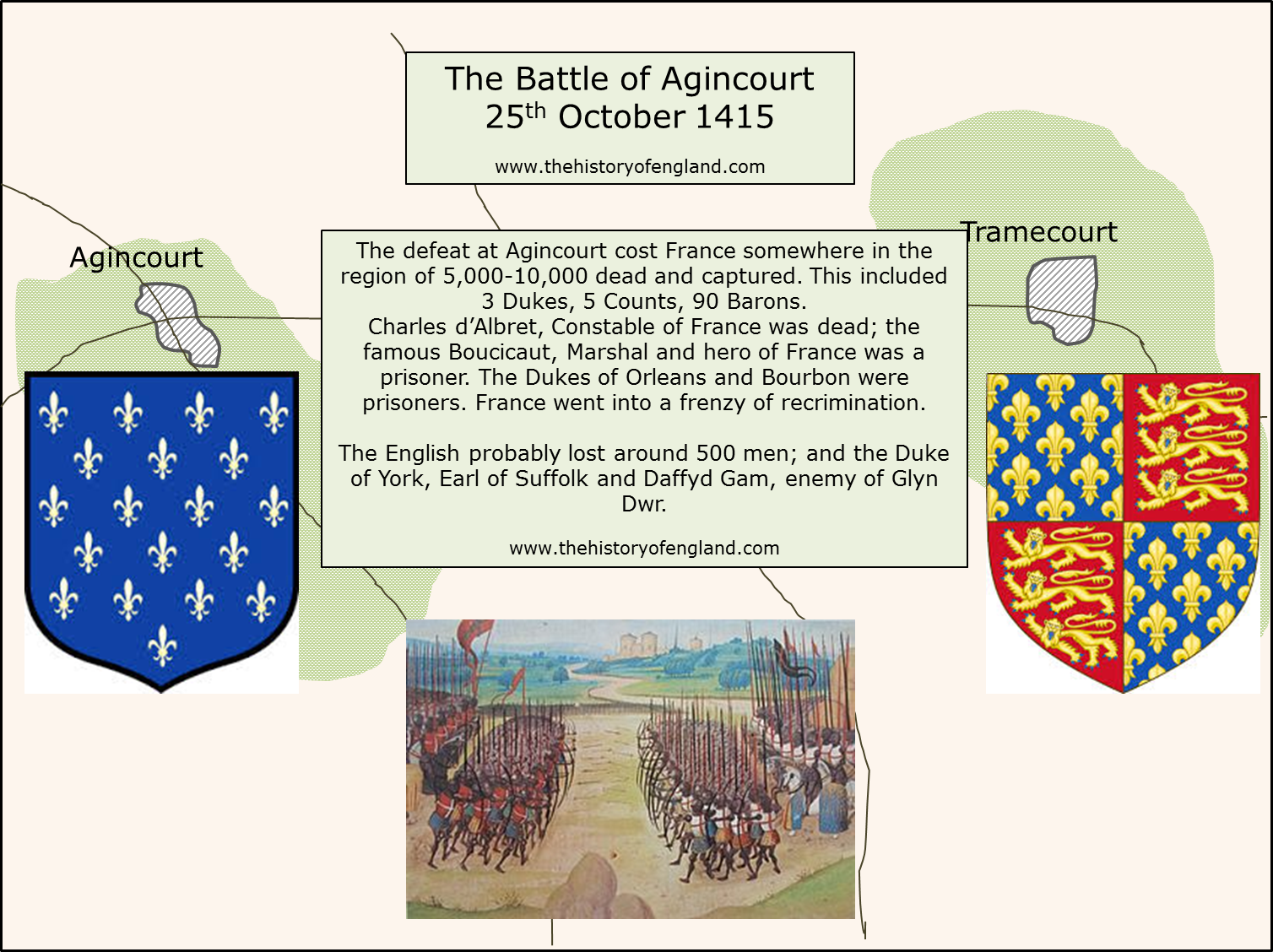
Who and how was the field of battle decided? Also assuming that the map is reading north to south, how any why were the English in the south?
They were In the south because they were invading another place in the south , and were on a victory march home
Ree
Henry had just been fighting on the Normandy coast and he travelled east then north to reach Azincourt
the French blocked the North passage so Henry headedsw confusing the French, they found a unprotected ford and crossed the road to Calais goes past Agincourt
The field of battle pretty much chose itself – to a degree. The English were to the south because they were travelling from south to North, trying to reach the safety of Calais. The French wanted to bring them to battle – so they had to get in their way, i.e. to the north of them.
When they managed this, the French would have looked to maximise their strength – so looked for good ground for heavy cavalry. Nice and flat. However, the day before, as Henry crosses the river, they draw back to wait for Orleans. maybe it’s this that commits them to the heavy ploughed field.
Here is a cartoon take on Agincourt with a scouse twist.
http://historyofliverpool.com/liverpool-history-100-years-war/
Nice set of maps, but the text for slide 7 starts by repeating the text from slide 6 (with a spelling mistake added).
No. after all this time. *sigh* Thank you Chris I will try to fix it, though after all this time I think I have forgotten how!
Nice maps, but all lack an essential part of any map: a north-pointing arrow. Never assume the reader will assume that the drawing may be drawn with north at the top.
Next, as one viewer noted, bad grammar & punctuation (or lack thereof) throughout the text detracts from it, making it less professional than it could have been.
Still found it informative and useful; it just could have been better.
Points well made and taken….proof reading has never been a talent, and sadly I can no longer find the base files…so the grammar will live forever as a reproof…
An excellent effort Mr. Crowther. Your frequent critics notwithstanding…..
Thank you!
We visited the small chapel as we headed north to catch boat to England. Sadly, there were so many surnames of sons of one family and cousins and uncles and fathers. It seemed such a desolate place even in approx. 1975-l980.
I have never been to the battlefield, but your sounds like a lovely visit – and its so good to get a sense of the place
Thank you for the great map and slides to display the battle – it has really helped my understanding as a history student 🙂
How did the French lose 5,000 men to the English losing 500? That is a lopsided victory. Why were the casualties so different?
The format of the battle for a start – with waves of French approaching over distance against a securely held line. But normally these sort of numbers are because the army that breaks loses a lot of men in the aftermath – the flight out of formation when they are vulnerable.